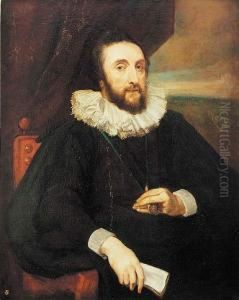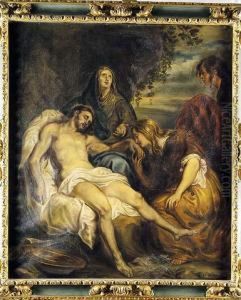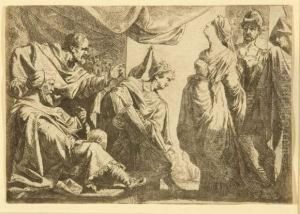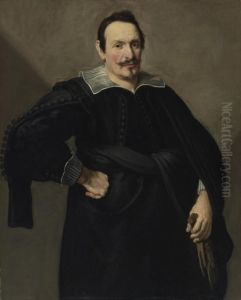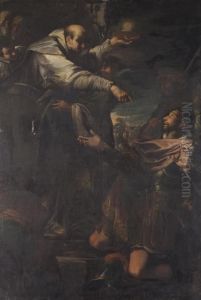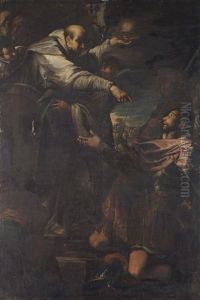Daniel Van Den Dyck Paintings
Daniel Van Den Dyck, born in 1616 in Antwerp, was a notable Flemish painter and engraver whose work contributed significantly to the Baroque period. His life and career were deeply rooted in the rich artistic culture of Antwerp, a city renowned for its vibrant art scene during the 17th century. Van Den Dyck's early life was marked by an immersion in the flourishing artistic environment of his hometown, which played a pivotal role in shaping his artistic endeavors and aspirations.
Despite the scarcity of detailed records about his personal life and training, it is believed that Van Den Dyck received his artistic education in Antwerp, possibly studying under the guidance of prominent local painters. This training period was crucial for Van Den Dyck, as it allowed him to develop a distinctive style characterized by a meticulous approach to detail and a profound understanding of Baroque aesthetics. His works often depicted religious themes, landscapes, and portraits, showcasing his versatile talent and deep grasp of different subjects.
Throughout his career, Daniel Van Den Dyck achieved recognition and success, not only in Antwerp but also in other parts of Europe. His ability to blend realism with the dramatic intensity typical of the Baroque period earned him a place among the esteemed artists of his time. Van Den Dyck's engravings, in particular, garnered widespread acclaim for their precision and beauty, contributing significantly to his reputation and legacy.
Despite his achievements, detailed accounts of Van Den Dyck's life remain limited, and many of his works have been lost or remain unidentified. However, his surviving pieces continue to be celebrated for their artistic merit and historical significance. Daniel Van Den Dyck passed away in 1684, leaving behind a legacy that, although not as well-documented as some of his contemporaries, remains an important part of the Flemish artistic heritage. His contributions to the Baroque period and to the rich tapestry of Flemish art continue to be recognized and admired by art historians and enthusiasts alike.
